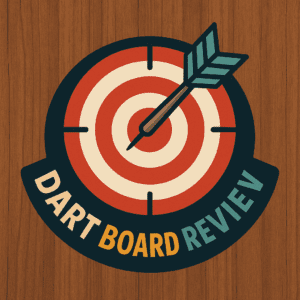
The Mental Edge in Darts
While physical skill is crucial in darts, the mental game often separates good players from great ones. Precision and focus aren’t just about steady hands—they’re rooted in mindset. This guide unveils 10 mind tricks to sharpen your mental toolkit, helping you stay calm under pressure and hit your targets with confidence.
1. Visualization: See It Before You Throw It
Why It Works: Visualization primes your brain and muscles for success. Studies show that mentally rehearsing actions activates the same neural pathways as physical practice.
How to Apply:
Close your eyes and imagine the perfect throw: stance, grip, release, and the dart landing exactly where you want.
Focus on sensory details—the feel of the dart, the sound of it hitting the target.
Practice daily for 5–10 minutes, especially before games or practice sessions.
Pro Tip: Combine visualization with physical throws. Visualize a bullseye, then replicate the throw in real life.
2. Controlled Breathing: Calm Your Nerves, Steady Your Hand
Why It Works: Deep breathing lowers heart rate and reduces muscle tension, preventing shaky hands.
How to Apply:
Use the 4-4-4-4 Box Breathing Technique: Inhale for 4 seconds, hold for 4, exhale for 4, hold for 4. Repeat 3–5 times.
Breathe deeply before each throw to reset focus.
Pro Tip: Pair breathing with a mantra like “steady and smooth” to reinforce calmness.
3. Mindfulness: Stay in the Present Moment
Why It Works: Overthinking past misses or future scores disrupts focus. Mindfulness keeps you anchored in the now.
How to Apply:
Focus on tactile sensations: the weight of the dart, your feet on the floor, or your grip.
If distracted, gently return focus to your breath or throwing routine.
Pro Tip: Practice mindfulness during practice games to build resilience against distractions.
4. Goal Setting: Small Wins, Big Progress
Why It Works: Process-oriented goals (e.g., “perfect my release”) are more actionable than outcome goals (e.g., “win the game”).
How to Apply:
Set SMART Goals: Specific, Measurable, Achievable, Relevant, Time-bound.
Example: “Land 8/10 darts in the triple 20 this session.”
Celebrate small victories to build confidence.
5. Positive Self-Talk: Rewire Your Inner Dialogue
Why It Works: Negative thoughts (“Don’t miss!”) increase anxiety. Affirmations boost confidence.
How to Apply:
Replace “I can’t lose” with “I’ve trained for this.”
Use short, powerful phrases: “Smooth release,” “Focus on the target.”
Pro Tip: Write down 3 positive affirmations and repeat them before playing.
6. Pre-Shot Routine: Consistency is Key
Why It Works: Routines create muscle memory and signal your brain to enter “focus mode.”
How to Apply:
Develop a repeatable sequence: Adjust stance, take a breath, visualize, throw.
Keep it under 10 seconds to maintain rhythm.
Pro Tip: Test different routines in practice to find what feels natural.
7. Embrace Pressure: Turn Anxiety into Fuel
Why It Works: Pressure is inevitable—reframing it as excitement improves performance.
How to Apply:
Simulate pressure in practice: Set challenges (e.g., “Score 100 points in 5 throws”).
Remind yourself, “This is fun—I’m ready to shine.”
8. Mental Rehearsal: Practice Without a Dart
Why It Works: Mental rehearsal reinforces technique and focus, even off the board.
How to Apply:
Spend 5 minutes daily imagining flawless throws in different scenarios (e.g., tight scorelines).
Combine with physical practice for maximum impact.
9. Analyze Without Judgment: Learn from Mistakes
Why It Works: Critiquing your throws objectively helps adjust technique without self-criticism.
How to Apply:
After a miss, ask, “Was my grip consistent?” or “Did I follow through?”
Adjust mechanics calmly, then refocus.
10. The Power of Repetition: Train Your Brain
Why It Works: Repetition builds muscle memory and mental stamina.
How to Apply:
Dedicate 15–20 minutes daily to targeted practice (e.g., aiming at specific segments).
Pair each physical throw with a mental check-in (“Was I fully focused?”).
Conclusion: Integrate and Elevate
Mastering these mind tricks takes time, but consistency pays off. Start with 1–2 strategies, track progress, and gradually add more. Remember, darts is as much a mental sport as a physical one—train your brain, and your game will soar.
